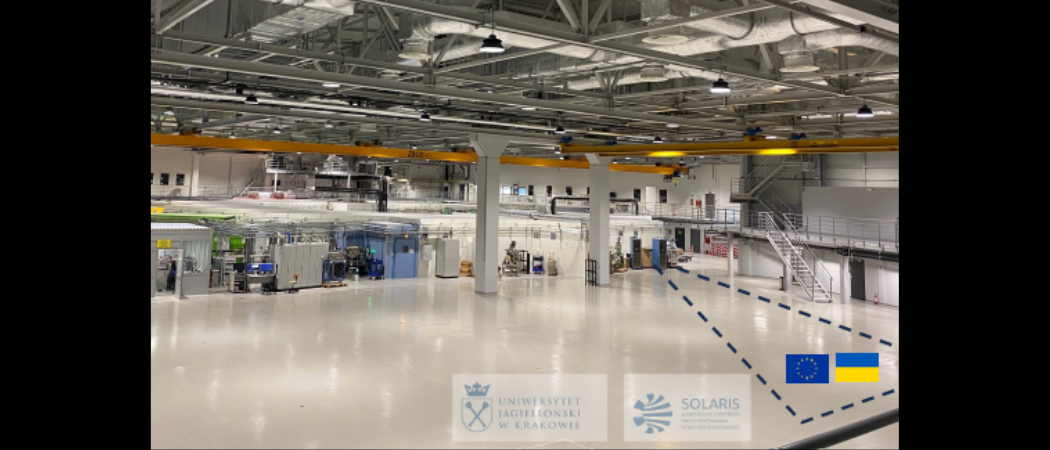Swiss-backed project to provide much needed scientific infrastructure for Ukraine, where damage to R&D facilities is estimated at over €1B

Plans for the approximately 34-metre Ukraine-owned beamline at the Solaris synchrotron in Kraków. Photo: SOLARIS National Synchrotron Radiation Centre
A project to build a new beamline for Ukrainian scientists in Poland has received a €1 million boost thanks to a grant from the Swiss National Science Foundation (SNSF).
The beamline will be housed at the Solaris synchrotron in Kraków but will be the property of Ukraine, providing new scientific infrastructure for the country and its scientists.
Ukraine’s research infrastructure has been devastated since Russia’s full-scale invasion of the country over two years ago. A UNESCO report in March this year estimated the total damage at over €1.15 billion and rising every day.
“What scientists need is infrastructure, that’s why this project makes sense,” said Laure Ognois, head of international affairs at SNSF. “Ukraine has an excellent community in research, and we really want to support the reconstruction of Ukraine.”
SNSF’s grant for the Light for Ukraine project adds to a previous €500,000 grant from the Swiss government and over €1 million worth of equipment donated from the Swiss Light Source (SLS) at the Paul Scherrer Institut (PSI).
The Light for Ukraine project came about after a 2022 meeting of the League of European Accelerator-based Photon Sources (LEAPS) which discussed supporting Ukraine’s science community.
LEAPS member Solaris was chosen to lead the initiative and along with the National Academy of Sciences of Ukraine organised a workshop in 2023, with the idea of building a beamline growing out of this. In fortunate timing, the SLS in Switzerland was due for a major upgrade, meaning it had high-quality scientific equipment it could no longer use. A feasibility study carried out by Luc Patthey from PSI showed the equipment could be installed at the Solaris synchrotron, paving the way for work to begin on the Ukrainian beamline.
“This project ticks the box of providing scientific infrastructure for Ukraine," Patthey said. “The advantage is that this is going to be open to the whole scientific community, from Ukraine and elsewhere.”
Research opportunities
The beamline has a range of applications, including catalysis, environmental science, chemical imaging, materials science and nano- and micro-spectroscopy. “I believe we can make really interesting research activities with this equipment and create niche research opportunities for the Ukrainian people,” Patthey said.
The hope is for the first experiments to take place in 2026, but to reach that point the project needs around another €3.5 million. “So far this is a 100% Swiss-funded project but we’d like to raise the flag and call for our European colleagues to help to continue financing this,” Patthey said.
While the project can provide a boost in the short term, it could also underpin future capacity building. “[It] may seed the path for further development in Ukraine, for example, it could longer term lead to building a synchrotron in Ukraine,” said Patthey.





 A unique international forum for public research organisations and companies to connect their external engagement with strategic interests around their R&D system.
A unique international forum for public research organisations and companies to connect their external engagement with strategic interests around their R&D system.